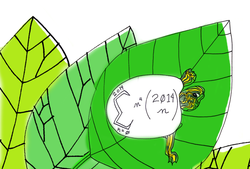Not Lucas' Theorem!
 What is the remainder when
is divided by
?
What is the remainder when
is divided by
?
The answer is 299.
This section requires Javascript.
You are seeing this because something didn't load right. We suggest you, (a) try
refreshing the page, (b) enabling javascript if it is disabled on your browser and,
finally, (c)
loading the
non-javascript version of this page
. We're sorry about the hassle.
We can first write n 4 as: n 4 = 2 4 ( 4 n ) + 3 6 ( 3 n ) + 1 4 ( 2 n ) + ( 1 n ) in order to exploit the identity: n = 0 ∑ 2 0 1 4 ( k n ) ( n 2 0 1 4 ) = ( k 2 0 1 4 ) ⋅ 2 2 0 1 4 − k . Since 8 1 9 = 3 2 ⋅ 7 ⋅ 1 3 , we just have to compute the residue classes ( m o d 7 , 9 , 1 3 ) of: 2 4 ( 4 2 0 1 4 ) 2 2 0 1 0 + 3 6 ( 3 2 0 1 4 ) 2 2 0 1 1 + 1 4 ( 2 2 0 1 4 ) 2 2 0 1 2 + 2 0 1 4 ⋅ 2 2 0 1 3 . Since ϕ ( 1 3 ) = 2 ϕ ( 9 ) = 2 ϕ ( 6 ) , this is the same as calculating the residue classes ( m o d 7 , 9 , 1 3 ) of: 2 4 ( 4 2 0 1 4 ) 2 6 + 3 6 ( 3 2 0 1 4 ) 2 7 + 1 4 ( 2 2 0 1 4 ) 2 8 + 2 0 1 4 ⋅ 2 9 , or: ( 2 0 1 4 ⋅ 2 0 1 3 ⋅ 2 0 1 2 ⋅ 2 0 1 1 ) ⋅ 2 6 + 6 ( 2 0 1 4 ⋅ 2 0 1 3 ⋅ 2 0 1 2 ) ⋅ 2 7 + 7 ⋅ ( 2 0 1 4 ⋅ 2 0 1 3 ) ⋅ 2 8 + 2 0 1 4 ⋅ 2 9 . The last sum is just 2 ( m o d 9 ) , 5 ( m o d 7 ) , 0 ( m o d 1 3 ) , hence the answer is 2 9 9 by the chinese theorem.